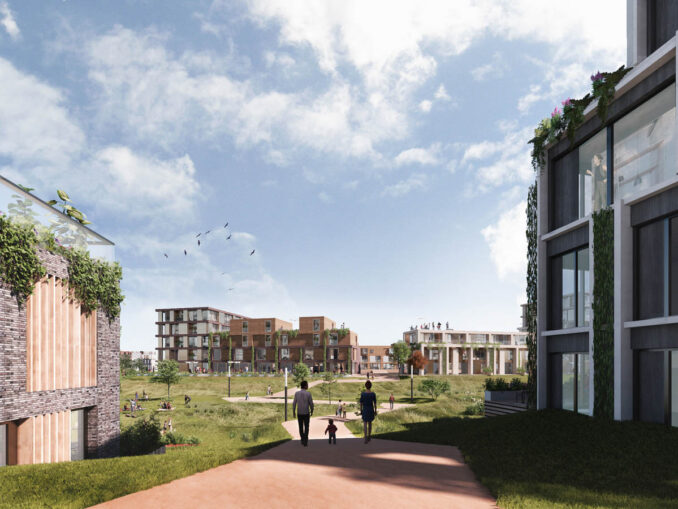
An urban vision creating a new neighbourhood in the river landscape of Nijmegen

KCAP with Barcode Architects and Lodewijk Baljon landschapsarchitecten have created the urban vision DeWaalhoven for the dike zone in Nijmegen Noord, The Netherlands. In consortium with the developers VanWonenand BPD, the team designed the winning proposal in a tender called for by the municipality of Nijmegen. The design fulfills the city’s ambitions for a balanced embedding of a sustainable residential area along the River Waal.
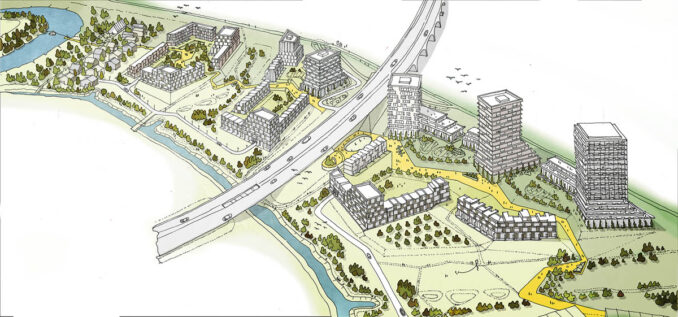
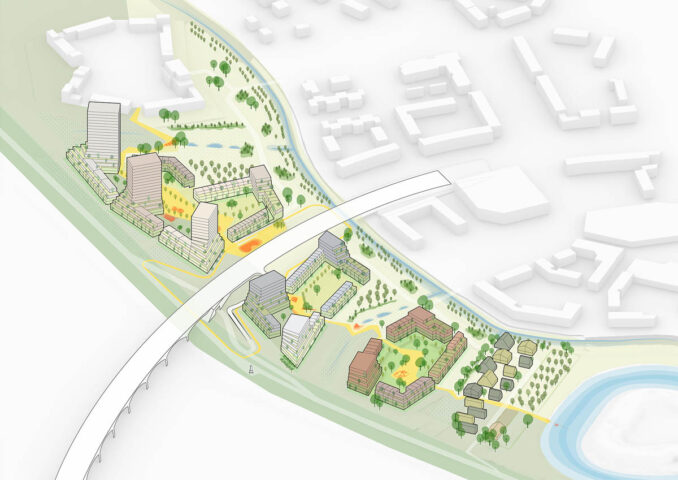
The entire development of the plan will take approximately five years. Commissioned by developer consortium VanWonen and BPD, KCAP has developed the overall urban design and a large part of the architecture.KCAP and Barcode Architects are responsible for multiple tower ensembles within the plan. Lodewijk Baljonlandschapsarchitecten designed the landscape plan.
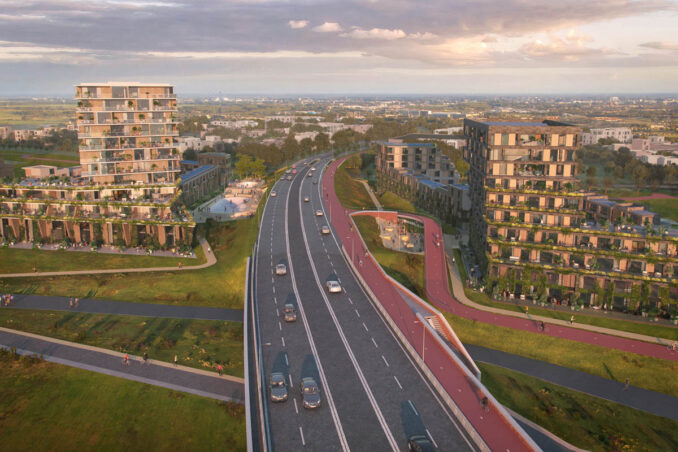
De Waalhoven is a large-scale opportunity for Nijmegen to create a new residential area based on community-building principles: sustainability, connectivity, and landscape. The design team developed an urban quarter built upon an integrated approach to urban planning, landscape design, and architecture with particular attention to the natural environment. The urban vision for around 570 houses responds to the unique dike and fluvial landscape, the development of the suburb De Waalsprong, and the history of Nijmegen. As stated in the name of the project itself (Waalhoven inDutch means Waal’s courtyards), the typology of the collective courtyard building is an essential design quality.
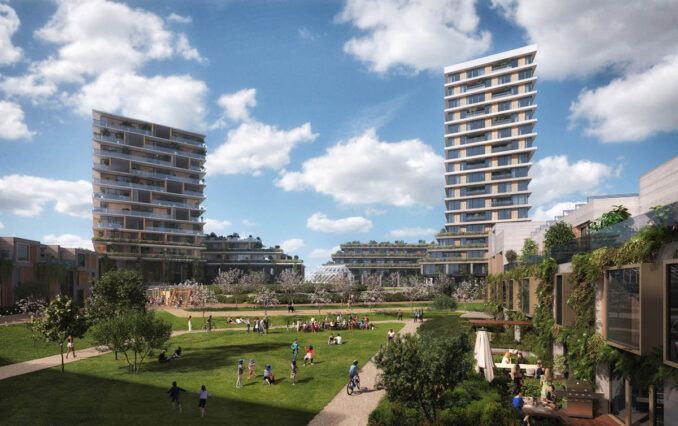

The Waalsprong, an urban development on the outskirts of Nijmegen Noord, is a response to the housing shortage in the city. The new neighborhood, De Waalhoven, will create a sustainable transition between the river landscape and the Waalsprong district. It connects architecturally to the city and the smaller scale of local buildings, making a new, highly recognizable plan. DeWaalhoven is designed as a car-free and climate-proof district based on circular economy principles and promotes a healthy lifestyle. As such, the district is ready to respond flexibly to future developments.


The land used as an old farm with orchards, and water-related infrastructure became essential elements for the new development. The courtyard clusters are positioned on small hills that hint at the terp, an artificial elevation to build a settlement above the floodwater line. At the same time, terraced townhouses are directly built on the enlarged and modified dike profile overlooking the river. The level difference of the site allows thecreation of a diverse and lively landscape for all users, withvegetable gardens, greenhouses as well as playgrounds for children. The 20 barn-like family houses bear a strong resemblance to the former rural purpose of the area.
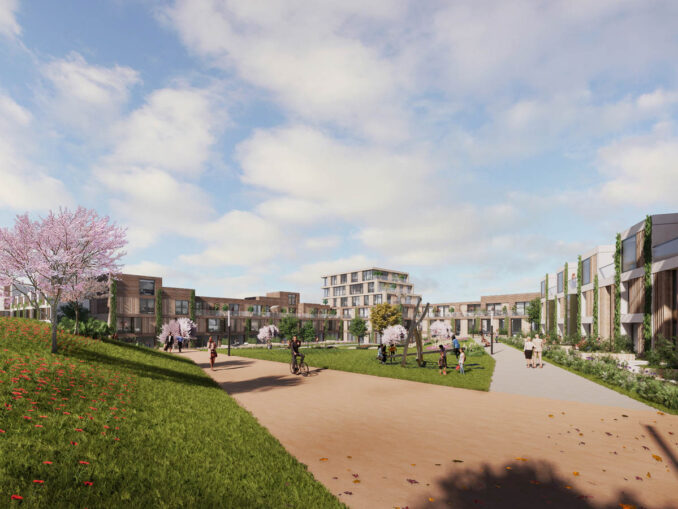
Dimensions, spatial layout, and the typology of the architecture of De Waalhoven embrace the landscape as a starting point. Near theOversteek bridge on the northern side of the Waal, the urban architecture is loaded with communal spaces for sports and recreation with a skate park from a welcoming entrance, a calling card for the city. The complexity in the height difference of the ensemble of the tower volumes with their all-sided design connects with the different levels of scale in the city center and the landscape.
Greenery running through the plinth in the façade emphasizes the relationship with the context. Wood elements and the implementation of vegetation along the entire front provide a high-quality, sustainable construction. The low-rise buildings enclose the collective green inner courtyards that function as the buildings natural lungs. The inner dwellings have a direct relationship with the courtyard, which helps foster social interaction between residents.
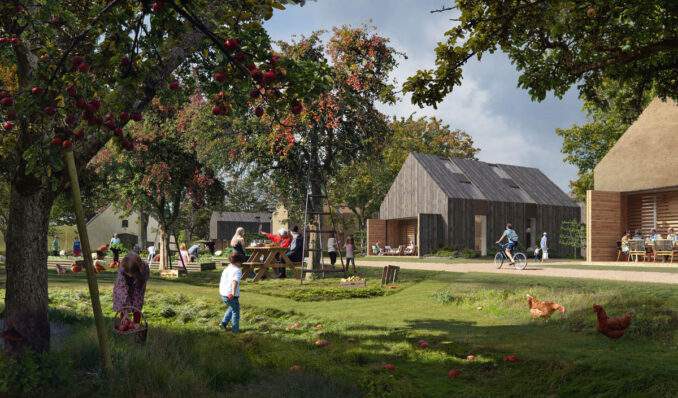
DeWaalhoven
Design Team: KCAP with Barcode Architects and Lodewijk Baljon landschapsarchitecten
